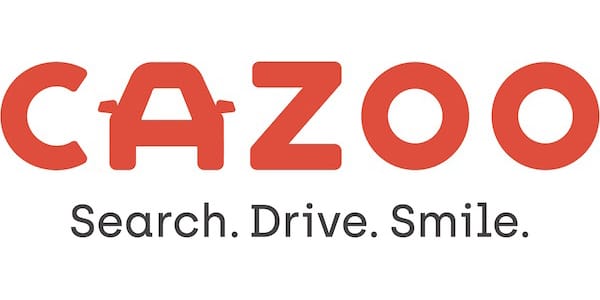In 1950, two years before she became queen, the second world war was only five years over and Britain’s economy was still in dire need of foreign currency to buy imported food and raw materials. ‘Export or die’ was the Ministry of Information mantra.
As European car factories were slower to rebuild, Britain had a short-term lead supplying its colonial markets such as Australia and South Africa. Steel was rationed to each maker according to their potential to generate export orders. At the dawn of the new decade, Britain was the world’s leading exporter of cars in 1950 with 398,300 leaving its shores.
Morris dominated British motor manufacturing, next came Austin with huge factories in Oxford and Birmingham respectively. Motor manufacturing was largely in the hands of a small and powerful collection of Sirs. William Morris had become Lord Nuffield and set up hospitals, while Sir Leonard Lord ruled the Austin empire with a cigarette always parked in the corner of his mouth. Standard was Sir John Black, Rootes (Hillman, Sunbeam, Humber) was Sir William ‘Billy’ Rootes and his brother Reginald.
Ford of Britain had always been American-owned, as had Vauxhall (by General Motors since 1925). Britons were soon crazy for American music and style, and the bigger Fords and Vauxhalls made at Dagenham and Luton became smaller versions of their transatlantic cousins, with more chrome, more fins and pastel two-tone paints.


A merger between Morris and Austin had been debated for many years and after protracted negotiations the British Motor Corporation (BMC) finally came into being in February 1952. Early 1950s BMC cars stuck with tweedy British names such as Oxford and Cambridge but ditched their frumpy looks towards the end of the decade when management contracted Italian designer Pinin Farina to provide a dash of style. Triumph also went to Italy, while Rootes plumped for American stylist Raymond Loewy.
Jaguars were shaped very nicely in Coventry by boss Sir William Lyons and roared through the 1950s advertising ‘grace, space and pace’ from sports cars and saloons for a lot less than a Rolls-Royce or a Bentley.
The 1950s was the golden age for affordable British sports cars and MGs, Triumphs and Austin-Healeys went down a storm in the USA. Britain was enjoying a surge of motor racing, with new circuits formed from abandoned wartime airfields. By 1952, Britain had three official racing circuits: former bomber training base Silverstone, Brands Hatch and Goodwood. Lotus had been founded in 1947 and after making its name with the self-assembled Lotus Six sports car surprised everyone with its all-fibreglass Lotus Elite in 1957.
Most people proudly bought British, but despite the closeness of the war, braver citizens began to take to the Volkswagen Beetle, as well as the baby Fiat 500. Renaults and Citroëns were assembled west of London to save tax. Fuel rationing after the 1956 Suez crisis opened the door to tiny fuel-sipping three-wheel German ‘bubble cars’. The Mini was put in train by Austin to beat them.
Some ancient names of British motoring fell away in the 1950s such as Bradford’s Jowett and Coventry’s posh Armstrong-Siddeleys and Lanchesters. Daimler was eaten by Jaguar in 1960, Standard by Triumph in 1961. Happily, little Morgan sports cars from Worcestershire is still with us today. Rolls-Royce (which had owned Bentley since the 1930s) glided out of the ‘fifties with its Silver Cloud, but the old coachmakers which built Rolls’ bodies to personal order faded away.


The decade ended with the Austin (or Morris) Mini even though the bubble car boom by then had popped. It blew away technical conventions while the Ford Anglia played it safe but was a big seller.
1960s – cool cars, clouds gather
The Beatles and James Bond had stormed America, and by the middle of the 1960s there were plenty of groovy British motors to be had. The gorgeous Jaguar E-Type came in 1962, then stylish sportscars the MGB and the Triumph Spitfire. The modern executive’s dream family car was the advanced Rover 2000, while the modern tycoon’s dream coupé was the Jensen Interceptor. The Ford Cortina and the Austin 1100 were million-sellers.
Hillman, the everyday brand of the Rootes Group shot itself in the foot with the 1963 Imp. A belated response to the success of the Mini, it had a rear-mounted engine driving the rear wheels when most European manufacturers were switching to front engines and front-wheel drive. The Imp was hastily developed and early ones were shockers for breaking down, not helped by Rootes being forced by the government to build it at Linwood near Glasgow, some 300 miles away from its traditional home in Coventry. Early Imp unreliability, poor sales and strikes led to a complete buy-out of Rootes by Chrysler USA in 1967.
Back to 1964, the Aston Martin DB5 gained mythical status when Eon Productions chose it for a starring role laden with special effects in the 1964 James Bond film Goldfinger. Aston Martin and James Bond were paired for life, but the company continued to struggle for profit. By 1972 owner Sir David Brown (Mr DB) had to offload Aston when his tractor empire was in trouble.


In May 1965 Daihatsu became the first Japanese manufacturer to export to Britain with the little Compagno Berlina (but only sold eight of them), and by the end of the decade Mazda, Toyota and Honda had arrived modestly. While British carmakers snootily looked down their noses, America took the Japanese newcomers and the Volkswagen Beetle rather more seriously.
Major names started to struggle and the government started stepping in. BMC wrongly continued to believe (encouraged by government) that bigger was better, expanding its ranges and swallowing up car body makers Fisher Ludlow in 1963 and Pressed Steel in 1965.
Mergers now seemed the only way for the big British car firms to survive and in 1968 came a name which would dominate the news in the next decade – the British Leyland Motor Corporation. The starting point had been Leyland Commercial Vehicles buying Standard Triumph in 1960 and Rover in 1967. BMC had become British Motor Holdings in 1966 after buying Jaguar before it merged with Leyland. The £500m merger created the second largest motor manufacturer in Europe after Volkswagen and its 29 factories across the UK made everything from steam rollers to sports cars. Too big to thrive, too big to fail.
1970s – trouble and strife
Not a bad start. The 1970 Range Rover was something completely new, a high-riding two-door estate with the four-wheel drive capabilities of a Land Rover with the smooth and powerful Rover V8 engine and smart enough for a trip to town for dinner and dancing.
Elsewhere in the British Leyland empire, a line of not-quite-right cars was underway. The handsome Triumph Stag convertible, instead of using the Rover V8 engine, had a new one which promptly overheated. The new Morris Marina of 1972 was British Leyland’s belated attempt to take on the Ford Cortina, Ford Escort and the Hillman Avenger, but failed to excite. The 1973 Austin Allegro lives in motoring folklore as generally duff, but its main flaw was perhaps not having a hatchback when the 1974 Volkswagen Golf – and all rivals cars after it – did.


Then it got really miserable. The repercussions from the October 1973 Yom Kippur war lead to fuel shortages, a stock market crash and a global economic slowdown. By December 1973 the British government had ordered shops, offices and public spaces to cut lighting by half. Its economic policy also provoked a miners’ strike and on 1 January 1974 a three-day working week was instigated to save coal at power stations. The price of petrol rocketed, as did Mini sales. Here and there, electric cars were tried as a half-hearted experiment – but were discarded when petrol prices came down.
Aston Martin went into receivership at Christmas 1974 and no cars were built until mid-1975 after it was rescued by an American and a Canadian businessman. It came roaring back with the astonishing wedge-shaped Lagonda of 1976, the first British car with a digital dashboard.
Japanese imports raced ahead. Sure, early Japanese cars rusted as well as all the other brands but they were well built overall, they started each time, they came loaded with luxuries such as a radio and the dealers were actually nice to their customers. By 1976, Nissan’s Datsun brand was the top importer with almost 7% of the British market, ahead of European goliaths Fiat and Volkswagen.
There was a lot of shouting about imported cars generally. Fords and Vauxhalls were now designed in Germany and the 1976 Ford Fiesta was built in Spain. The 1975 Vauxhall Cavalier was a German Opel Ascona with a new Vauxhall nose and was a very good car. But at first it was made in (gasp) Belgium. Some companies would only buy British-built cars, and soon the Cavalier moved here.


British Leyland was now in a complete mess, most of its factories having a strike at one time or another with a knock-on effect on quality. In 1974, BL made a total loss of £23.9m and in 1975 the Labour government was forced to guarantee its working capital, effectively nationalising it. The government commissioned Sir Don Ryder to report on the company’s current and future prospects, and in April 1975 he concluded that it was simply too big to fail and recommended an incredible £1,500m of public money be invested in modernisation and that the company had to rationalise its products. The ship took a long time to steady – the handsome Rover SD1 of 1976 started disintegrating within weeks of leaving the factory.
Dearly departed in this decade was Jensen sports cars, but Lotus, its kit car days behind it, bet the bank on the new Elite of 1974. This was the curtain raiser to a range of larger and more sophisticated cars for the ‘70s and ‘80s including James Bond’s Esprit.
1980s and 1990s – new arrivals and self-offs
Cue hysterical Union Jack-waving for the 1980 launch of the Mini Metro, but the smartest thing BL did next was to collaborate with Honda. The last car to have a Triumph badge was the Acclaim of 1981, a sensible saloon largely based on the Honda Ballade, therefore easy to drive and painless to own.
The now-mighty Japanese car industry was beginning to build cars in Europe to get around import tariffs and in July 1986 the first Nissan Bluebird rolled off the production line at its new plant in Sunderland. In 2019, the factory built its ten millionth car, the hugely successful Qashqai.
Chrysler UK had limped through the 1970s and in 1978 Peugeot took control, re-naming it the Talbot Motor Company. Thus, the Coventry-built Chrysler Alpine became a Talbot before the name died in 1987. From 1985 to 2006, Peugeots would be built at the Ryton factory.
In 1986, Lotus was bought by General Motors, which would bring us a new Lotus Elan and the naughtily fast Vauxhall Lotus Carlton. Not to be outdone by its rival, the next year Ford scooped up Aston Martin. The American giant had decided that the only way to truly move upmarket was to buy up posh European brands for its Premier Automotive Group (PAG).
In 1989, Ford succeeded in out-bidding General Motors for control of Jaguar. Without doubt Ford’s further investment saved both Jaguar and especially Aston Martin, starting with the Jaguar-based DB7 of 1993. On the back of the DB7’s success, Ford’s ambitions for Aston Martin led to new cars and a new factory in Warwickshire. In 1999, it added Volvo to the PAG and followed that by acquiring Land Rover in 2000.


Toyota had been watching the success of Nissan in Sunderland and set up its own UK manufacturing facilities in 1989, building vehicles at Burnaston in Derbyshire and engines in Deeside, North Wales. The first car, a Carina E (for Europe), drove off the Burnaston production line on 16 December 1992.
Honda was the final Japanese manufacturer to start building in the UK, and for all of these brands an agreement had to be hammered out that they would contain a majority of components built in the UK or the EEC. Honda’s Swindon factory started with the Accord (its twin was the Rover 600) in 1992. More Honda-Rovers followed.
In early 1993 Lotus was sold to an unexpected buyer, Bugatti International, which then ran into trouble 18 months later and offloaded the majority of it to Malaysian-owned Proton cars.
By 1988 the British government had grown tired of propping up Austin Rover – by then called the Rover Group – and sold it to British Aerospace. Then in 1994, to much consternation, BMW bought Rover, saying it would gain from the four-wheel drive expertise of Land Rover and the small front-wheel drive cars (some said that was all it wanted, not the Rover brand). The new Mini was in its last stages of development as was the new Range Rover. The MG sports car brand also came with the deal. The Honda tie-up died.
BMW was not stopping there. In 1998 it had a furious bidding war with Volkswagen to buy Rolls-Royce Motors and Bentley when its owner Vickers, decided to sell. In a complicated switch, Volkswagen won the bid, but lost it four years later when BMW walked off with the rights to Rolls-Royce leaving VW with Bentley. BMW created a new home for Rolls at Goodwood and Volkswagen transformed the old Rolls factory at Crewe for its new-era Bentleys.
Standout British car of the 1990s? Ford had given us the Mondeo in 1993 but it was designed in Europe and the US to be a world car. There was only one true landmark British-designed and made car of the 1990s, the 1993 McLaren F1, a no-compromise supercar from McLaren Formula 1 designer Gordon Murray. Capable of reaching a top speed of 241mph, it was the world’s fastest production car ever – and remains a high point of automotive development almost 30 years later.
2000s – new takes on old names
At the start of the 21st Century BMW finally admitted it had bitten off more than it could chew in trying to make Rover turn a profit and made a dramatic exit. In May 2000, the company was sold to the Phoenix Consortium, a group of ex-bosses and private investors.
The Rover 75 saloon had only just been launched, new technology in a retro package complete with a wood and leather interior. It was a genuinely good car but now somewhat doomed. BMW was not daft. It kept Mini and Land Rover then promptly sold the latter to Ford. The production line for the new Mini was shipped down the M40 to Oxford while the Rover 75 line went the other way.


The newly-formed MG Rover kept the BMW-era cars going whilst struggling to bring anything truly new to market. Sales drooped and drooped until the company went into administration in 2005. The remaining 6,500 workers at the massive Longbridge plant were out of a job. Later that year the remaining assets of MG Rover were sold for £50m to China’s Nanjing Automotive. There were hopes that the Longbridge lines would re-start, but today’s MG cars are all built in China.
Meanwhile, the new Mini of 2000 had been an immediate worldwide success. It turned out that what foreign buyers wanted was British luxury and style, not economy cars – and that the people who best understood what made a British car British were Germans. The new Mini’s cheeky charms were expanded into a whole new family of cars, while Rolls-Royce and Bentley produced more models than at any time in their histories.
However, when the parent company sneezes, the little ones suffer. And by 2007, Ford was having a sneezing fit. Needing to shore up its floundering North American operations, it sold Aston Martin (although continued to supply engines) to a consortium of investors, then offloaded Jaguar and Land Rover in 2008 to India’s Tata Group. Ford had also stopped building any of its own cars in the UK in 2002.
2010s – adapt and survive
By the 2010s, there were no large British-owned car firms left but plenty of posh British brands with healthy order books. Everyday British folks still liked to buy Fords and Vauxhalls but cared not where they came from.
in 2017, Lotus Cars became majority owned by China’s massive Geely organisation, but the dust hadn’t settled yet on big mergers. General Motors left Europe for good, selling Vauxhall and Opel to French company PSA (basically Peugeot and Citroën), which in 2021 merged with Fiat-Chrysler to create an enormous new company called Stellantis – making Vauxhall one of a family of 14 automotive brands. The same year, Honda closed its doors in Swindon.
Entering the Carolean era
According to trade body the SMMT, more than 30 manufacturers now build in excess of 70 models of vehicle in the UK supported by 2,500 component providers. In the post-pandemic, shortage-struck year of 2021 over 859,000 cars, 72,913 commercial vehicles and 1.6 million engines were still built in the UK. Eight out of ten cars built here are exported.
Looking to the electric future, Nissan is creating a £1 billion battery gigafactory with partner Envision AESC, in addition to its Sunderland plant building a new generation electric crossover car. Jaguar and Bentley are set to reinvent themselves as all-electric brands. And aside from road cars, the epicentre of Formula One is very much in southern England. Seven of the ten teams competing in the championship are based there.
Big turned out not to be beautiful after all. We have become a nation of boutique carmakers.
You may also like:










